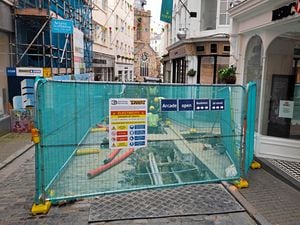‘Safer ways to deal with our medical waste than burning’
‘THERE are alternatives to a cancer risk incinerator,’ a deputy has urged the States as a tender goes out to replace the island’s 18-year-old medical waste burner.

The States has said the tender is expected to give them an idea of what could replace the ageing incinerator at the Princess Elizabeth Hospital, although it still meets the Office of Environmental Health and Pollution Regulation emissions standards.
One deputy, though, has come forward to suggest the use of effective non-incineration alternative technologies, such as high-pressure steam sterilization, microwave treatment, and alkaline hydrolysis, all of which are said to eliminate environmental releases of dioxins and mercury – harmful to the public and environment – from healthcare medical waste.
David De Lisle, who has brought his concerns forward to the States previously, has said he fears the continued use of incinerator emissions on public health and pushed the States to move with the times.
‘Incineration was the method of choice for hospitals and communities for the treatment of infectious medical waste in the past, but the World Health Organization in 2004 and the Stockholm Convention earlier in 2001 raised the need to consider the risks associated with the incineration of healthcare waste and called for elimination of dioxins and furans emitted by medical waste incinerators,’ he said.
‘A plethora of health studies indicated an association between incineration and cancer. Studies in the UK found an increased risk of childhood cancer and leukaemia among children living near incinerators. These studies were brought to the attention of our health policy management back in 2008/9.’
Deputy De Lisle has also in the past paid for experts, including the late Dr Dick van Steenis, a medical practitioner in the UK and a leading advocate of the impact of incineration on health, to come to the island to look into his concerns.
A map was produced to show the extent of air pollution coverage island-wide from the PEH incinerator.
He said incineration of medical waste was ‘no longer acceptable’ and had reduced Guernsey to a ‘developing country’.
‘Guernsey lags behind other industrial nations in applying modern methods in the way it deals with medical waste,’ he said.
‘It is important to recognise that many industrialised countries have moved away from incineration in recent years towards alternative technologies that do not produce dioxins.’
This includes the United States, whose incinerators are said to have decreased from 6,200 in number in 1988 to fewer than 100 today.
‘It is incumbent on our health service to promote the very best practices and technologies for healthcare waste management not only to reduce healthcare waste but also to eliminate environmental releases of dioxins and mercury from medical waste,’ added Deputy De Lisle.
However, Health & Social Care has responded, saying these safety claims were unfounded and that tests for such hazards were regularly carried out, but it was in the process of looking at other options as it neared the end of its life.
‘The current incinerator was commissioned in 2003 so is, therefore, nearly 18 years old,’ a States spokesman said.
‘It is constantly in use processing the island’s clinical waste stream. Any such facility needs to be capable of managing the full range of clinical materials.
‘The States of Guernsey has gone out to tender to understand what options are available for the Bailiwick to replace this incinerator. This is the normal process when planning the replacement of resources with a significant value.’
There is a deadline tomorrow for any expressions of interest for the replacement incinerator, with one put forward so far.





